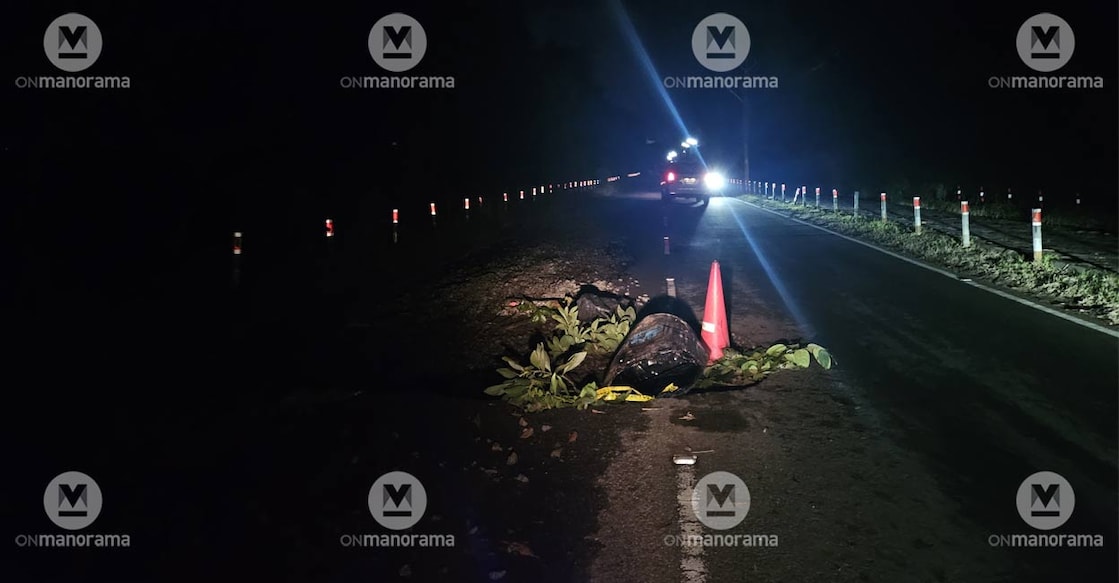Rain plays havoc with Kottayam bypass built at ₹5.4 cr, PWD goes for quick fix

Mail This Article
Every spell of rain turns the Kottayam Development Corridor into a dangerous trap for commuters. Deep potholes, hidden beneath stagnant water, metal debris strewn across the road, and non-functional streetlights make the bypass a nightmare—especially for two-wheeler riders. The 4-km road, 10 m wide, connecting Erayilkadavu to MC Road at Manipuzha, was once seen as a vital alternative to the town’s traffic-heavy centre. Frequent flooding and crumbling surfaces pose a serious threat to motorists.
Despite being constructed to BM (Bituminous Macadam) and BC (Bituminous Concrete) standards, the bypass suffers extensive damage every monsoon. Waterlogging is no longer seasonal—it's triggered by even a single rain spell, with water remaining on the road for days. The worst-affected areas are near the MC Road junction, where three deep potholes have formed during the recent rain. Yet, no warning signs are placed at this end to alert oncoming traffic. The authorities have gone for a temporary fix by filling the potholes with crushed rock. This gets scattered over the road, aggravating danger.
The bypass was built across a former paddy field and was elevated using soil, with some stretches raised over a metre. Funded by the Kerala Infrastructure Investment Fund Board (KIIFB) and the MLA fund of Thiruvanchoor Radhakrishnan, the road was meant to ease access to the Thiruvananthapuram route. But the elevation hasn't helped, as the nearby Kodoor river and streams frequently overflow, spilling water and waste onto the road. Waste accumulation in these water bodies has blocked the natural flow, worsening the problem.

At night, the situation becomes even more perilous. With many streetlights failing to work, commuters struggle to spot potholes, especially with blinding high beams from oncoming vehicles. Local resident Akhil recounted a recent near-accident: “It was around 8.30 pm. I was riding slowly due to the water. Suddenly, I saw a massive pothole just in time to brake. If I hadn’t, I’d have fallen right in.”
The corridor is also lined with small tea stalls and used by pedestrians and walkers, who now face additional hazards from creeping plants that block reflectors and from snakes.

According to Vimal, Assistant Executive Engineer at PWD in Kottayam, repairing the road while water remains is impossible. “We have to wait until it dries to fill potholes. Raising the road isn’t a simple solution either—it would require strengthening both sides and significant funding.”
Municipal councillor Sheeja Anil added that waterlogging began only after paddy cultivation ceased two years ago. “Earlier, there was no such flooding. The real issue is waste choking the rivers and streams nearby.”

Vimal stressed that waterlogging is the root cause of road damage across Kerala. “The bypass road was of excellent quality. But 90 per cent of road damage in the state is due to flooding. Unless we stop encroaching on and polluting water bodies, this will keep happening.”
The road was constructed in three phases, costing ₹5.4 crore in total. Though completed in 2016, tarring was delayed until 2018, and the road was opened to the public in March 2019. During construction, it reportedly caved in a couple of times.



